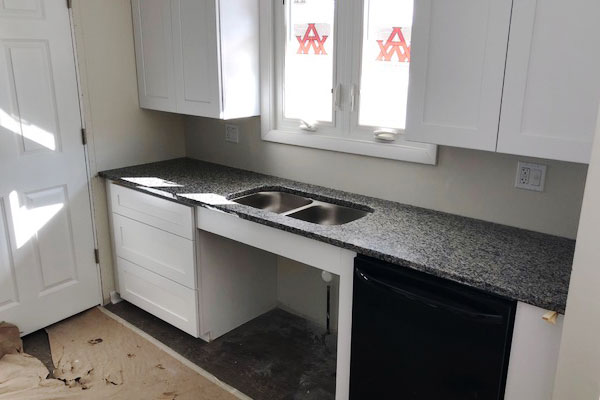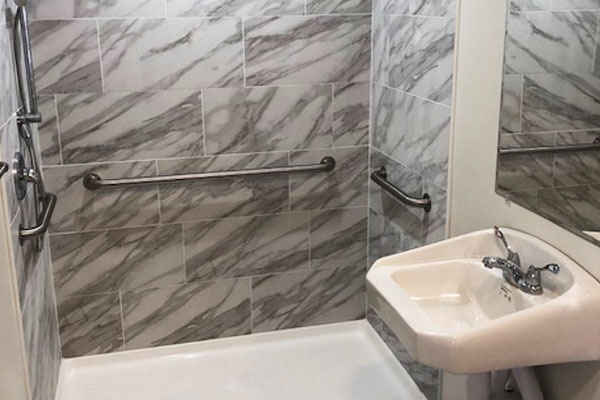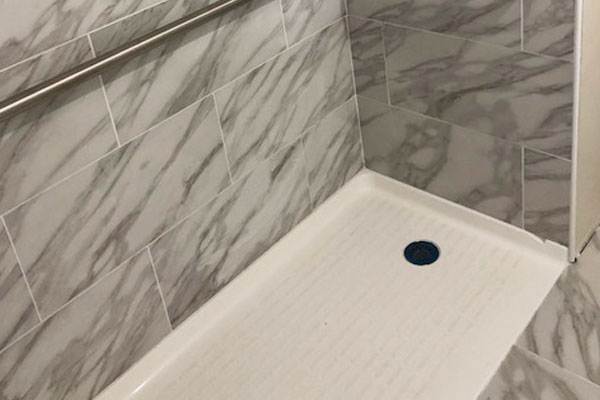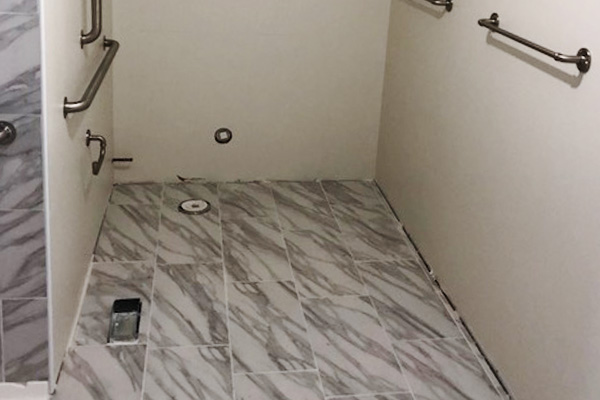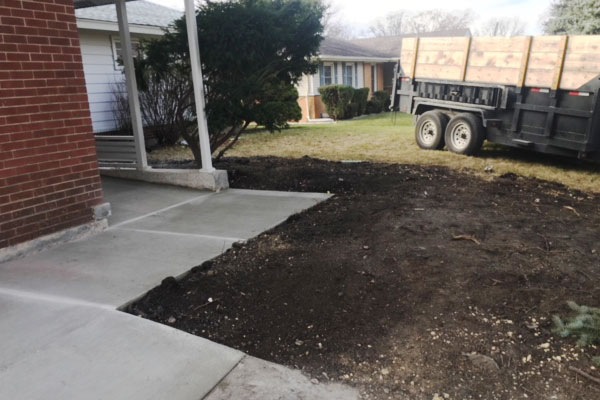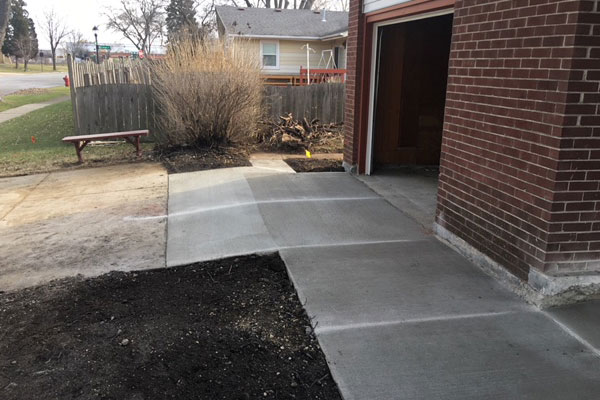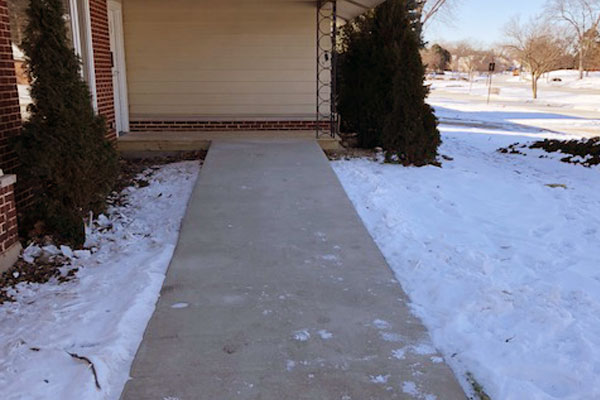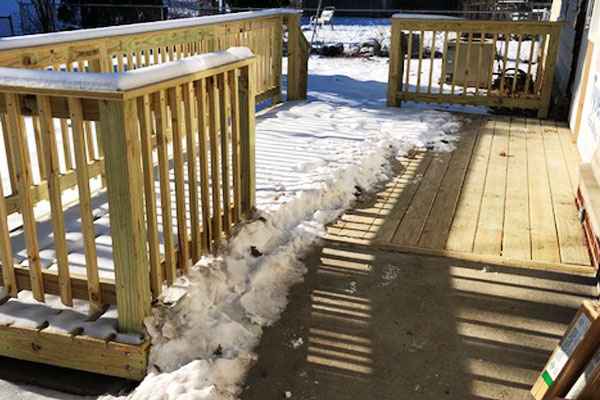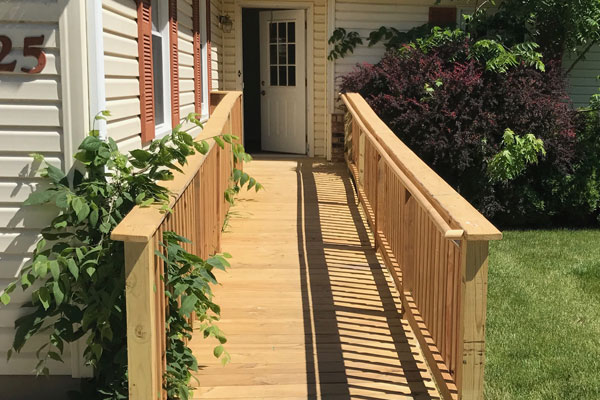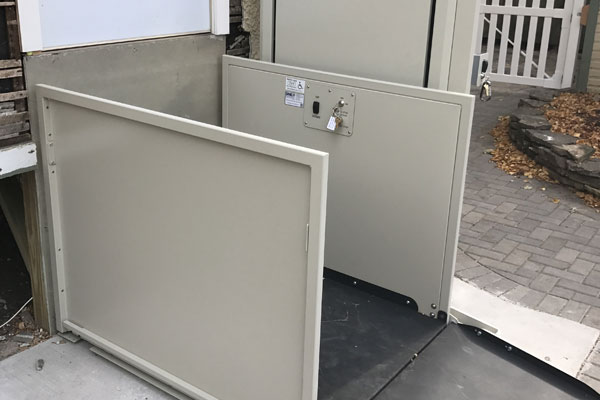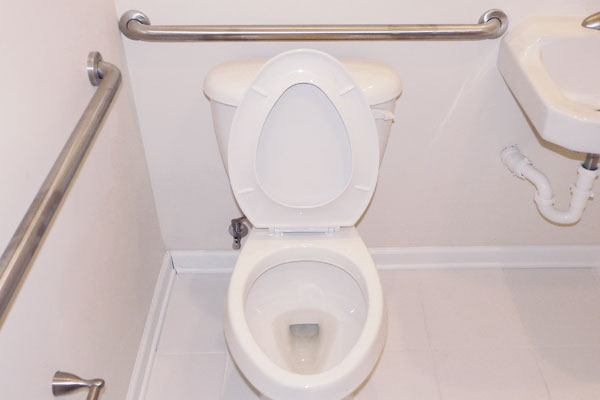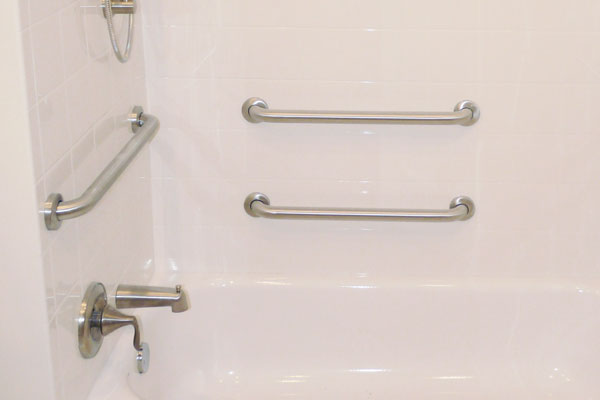AGING IN PLACE
Making your home safer and more barrier-free.
If you are like the majority of Americans you want to continue living at home in a familiar environment throughout your maturing years. Aging-in-place means living in your home safely, independently and comfortably, regardless of age or ability level.
Design for Independent Living
What is aging-in-place? If you are like the majority of Americans you want to continue living at home in a familiar environment throughout your maturing years. Aging-in-place means living in your home safely, independently and comfortably, regardless of age or ability level. It addresses the need to remodel existing homes and design new homes, so that people can age in place and not have to move to assisted-living facilities as they age. Since the vast majority of homes we live in are not well designed for this, a movement in residential construction has sprung up to meet this new consumer demand.
Boomers, who are 77 million strong and make up 28% of the U.S. population, are quickly catching onto this trend. The economics of aging-in-place modifications are a no-brainer. Moving to a typical assisted-living facility can cost up to $60,000 annually. The cost to widen the bathroom door, put in safety bars, and add a roll-in shower would typically cost about $6,000 to $8,000, but doing so is a onetime expense, not a yearly drain on your finances.
Too early to think this applies to you? Consider how many folks struggle with bouts of arthritis at an early age. If you fell and broke a leg, how easy would it be to get up and downstairs in your house? Perhaps you have aging parent or relative who is facing these challenges who may need to move in with you.
Things to Consider
The overall goal is to make the home safer, with less maintenance and more barrier-free. These are just a few examples. Virtually all rooms of your house can be improved, even closets and garages. Typical changes include the following:
Getting safely and securely into and out of the house.
- Better outdoor lighting to get you from your car to the door.
- Attractive ramps or a zero-step entrance for the home.
- A package shelf by front door.
- Handrails at existing steps and porches.
- A front door with sidelight for security.
- Fewer or no stairs.
Changes in the kitchen for easier meal preparation and eating.
Changes in the bathrooms - the number one place for accidents in your home.
Moving around within the house.
ADA compliant Kitchen
ADA compliant Bathroom
ADA compliant Bathroom
ADA compliant Bathroom
ADA compliant Bathroom
Graded sidewalk
Graded sidewalk
Graded sidewalk
Accessible Patio
Accessiblity Ramp
Accessiblity Lift
ADA compliant Bathroom
ADA compliant Bathroom
Exterior
- Low-maintenance exterior (vinyl, brick)
- Low-maintenance shrubs and plants
- Deck, patio, or balcony surfaces are no more than a half inch below interior floor level if made of wood
Overall Floor Plan
- Main living on a single story, including full bath
- No steps between rooms/areas on the same level
- 5-foot by 5-foot clear/turn space in living area, kitchen, a bedroom, and a bathroom
Hallways
- Minimum of 36-inches wide, wider preferred
- Well lit
Entries
- Accessible path of travel to the home
- At least one no-step entry with a cover
- Sensor light at exterior no-step entry focusing on the front-door lock
- There needs to be 32-inches of clear width, which requires a 36-inch door
- Non-slip flooring in foyer
- Entry door sidelight or high/low peep hole viewer; sidelight should provide both privacy and safety
- Doorbell in accessible location
- Surface to place packages on when opening door
Thresholds
- Flush preferable
- Exterior maximum of a half inch beveled
- Interior maximum of a quarter inch
Interior Doors
- There needs to be 32-inches of clear width, which requires a 36-inch door
- Levered door hardware
Windows
- Plenty of windows for natural light
- Lowered windows or taller windows with lower sill height
- Low maintenance exterior and interior finishes
- Easy to operate hardware
Garage or Carport
- Covered carports and boarding spaces
- Wider than average carports to accommodate lifts on vans
- Door heights may need to be nine feet to accommodate some raised roof vans
- Five-foot minimum access aisle between accessible van and car in garage
- If code requires floor to be several inches below entrance to house for fume protection, can slope entire floor from front to back to eliminate need for ramp or step
- Ramp to doorway, if needed
- Handrail, if steps
Faucets
- Lever handles or pedal-controlled
- Thermostatic or anti-scald controls
- Pressure balanced faucets
Kitchen Counters
- Wall support and provision for adjustable and/or varied height counters and removable base cabinets
- Upper wall cabinetry three inches lower than conventional height
- Accented stripes on edge of countertops to provide visual orientation to the workspace
- Counter space for dish landing adjacent to or opposite all appliances
- Base cabinet with roll out trays and lazy susans
- Pull-down shelving
- Glass-front cabinet doors
- Open shelving for easy access to frequently used items
Kitchen Appliances
- Easy to read controls
- Washing machine and dryer raised 12-15 inches above floor
- Front loading laundry machines
- Microwave oven at counter height or in wall
- Side-by-side refrigerator/freezer
- Side-swing or wall oven
- Raised dishwasher with push-button controls
- Electric cook top with level burners for safety in transferring between the burners, front controls and downdraft feature to pull heat away from user; light to indicate when surface is hot
Kitchen/Laundry Miscellaneous
- 30-inch by 48-inch clear space at appliances or 60-inch diameter clear space for turns
- Multi-level work areas to accommodate cooks of different heights
- Open under-counter seated work areas
- Placement of task lighting in appropriate work areas
- Loop handles for easy grip and pull
- Pull-out spray faucet; levered handles
- In multi-story homes, laundry chute or laundry facilities in master bedroom
Bathroom
- Wall support and provision for adjustable and/or varied height counters and removable base cabinets
- Contrasting color edge border at countertops
- At least one wheelchair maneuverable bath on main level with 60-inch turning radius or acceptable T-turn space and 36-inch by 36-inch or 30-inch by 48-inch clear space
- Bracing in walls around tub, shower, shower seat, and toilet for installation of grab bars to support 250-300 pounds
- If stand-up shower is used in main bath, it is curbless and minimum of 36-inches wide
- Bathtub - lower for easier access
- Fold down seat in the shower
- Adjustable/handheld showerheads, 6-foot hose
- Tub/shower controls offset from center
- Shower stall with built-in antibacterial protection
- Light in shower stall
- Toilet two and half inches higher than standard toilet (17-19 inches) or height-adjustable
- Design of the toilet paper holder allows rolls to be changed with one hand
- Wall-hung sink with knee space and panel to protect user from pipes
- Slip-resistant flooring in bathroom and shower
Stairways, Lifts, and Elevators
- Adequate hand rails on both sides of stairway, one and a quarter inch diameter
- Increased visibility of stairs through contrast strip on top and bottom stairs, color contrast between treads and risers on stairs and use of lighting
- Multi-story homes may provide either pre-framed shaft (i.e., stacked closets) for future elevator, or stairway width must be minimum of four feet to allow space for lift
- Residential elevator or lift
Ramps
- Slope no greater than one inch rise for each 12-inches in length, adequate handrails
- Five-foot landing provided at entrance
- Two-inch curbs for safety
Storage
- Adjustable closet rods and shelves
- Lighting in closets
- Easy open doors that do not obstruct access
Electrical, Lighting, Safety, and Security
- Light switches by each entrance to halls and rooms
- Light receptacles with at least two bulbs in vital places (exits, bathroom)
- Light switches, thermostats, and other environmental controls placed in accessible locations no higher than 48 inches from floor
- Electrical outlets 15-inches on center from floor; may need to be closer than 12-feet apart
- Clear access space of 30-inches by 48-inches in front of switches and controls
- Rocker or touch light switches
- Audible and visual strobe light system to indicate when the doorbell, telephone or smoke or CO2 detectors have been activated
- High-tech security/intercom system that can be monitored, with the heating, air conditioning and lighting, from any TV in the house
- Easy-to-see and read thermostats
- Pre-programmed thermostats
- Flashing porch light or 911 switch
- Direct wired to police, fire and EMS (as option)
- Home wired for security
- Home wired for computers
Flooring
- Smooth, non-glare, slip-resistant surfaces, interior and exterior
- If carpeted, use low (less than a half inch high pile) density, with firm pad
- Color/texture contrast to indicate change in surface levels
Heating, Ventilation, and Air Conditioning
- HVAC should be designed so filters are easily accessible
- Energy-efficient units
- Windows that can be opened for cross ventilation, fresh air
Energy-Efficient Features
- In-line framing with two by six studs spaced 24-inches on center
- Air-barrier installation and sealing of duct work with mastic
- Reduced-size air conditioning units with gas furnaces
- Mechanical fresh air ventilation, installation of air returns in all bedrooms and use of carbon monoxide detectors
- Installation of energy efficient windows with Low-E glass
Reduced Maintenance/Convenience Features
- Easy to clean surfaces
- Central vacuum
- Built-in pet feeding system
- Built-in recycling system
- Video phones
- Intercom system
Other Ideas
- Separate apartment for rental income or future caregiver
- Flex room that can used as a nursery or playroom when the children are young and as a home office later; if combined with a full bath, room could also be used for an aging parent/aging in place
Source: Home Innovation Research Labs ToolBase online resources.

Our overall goal is to make your home safer, with less maintenance and more barrier-free.
Ask us how we can help you improve your home.
Contact Us